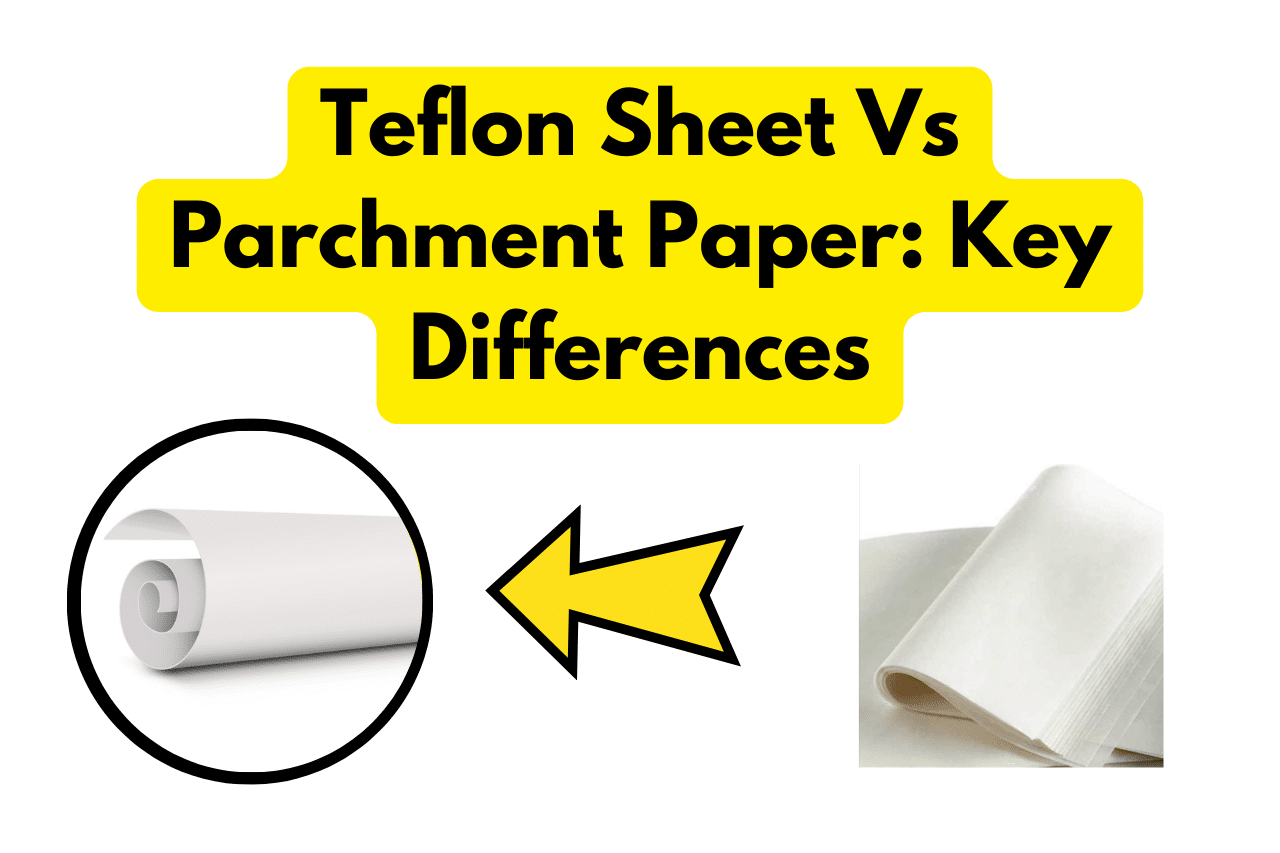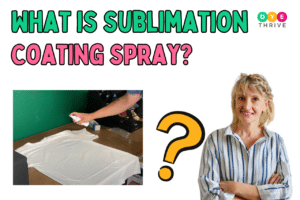Baking is one of those activities where attention to detail and the right tools can make a world of difference. Two commonly used materials in the kitchen are Teflon sheets and parchment paper.
While they may seem similar at first glance, they have distinct characteristics that make them suitable for different purposes.
Whether you’re an avid home baker or a professional chef, understanding the nuances between Teflon sheets and parchment paper can help you achieve better results and ensure a smooth baking experience.
In this article, we’ll dive deep into ‘Teflon sheet vs parchment paper’ along with their pros and cons, and provide insights to help you make an informed choice.
you may also like:
- How Many Prints Per Sublimation Cartridge Can You Get?
- What Sublimation Items Sell Best? Top 10 Products
- Can Sublimation Ink Go Bad? (Reasons & Preventions)
- Can You Mix Sublimation Ink Brands?
What is a Teflon Sheet?
A Teflon sheet, also known as a PTFE (Polytetrafluoroethylene) sheet, is a synthetic material made from fluoropolymer. It is renowned for its exceptional non-stick properties, heat resistance, and chemical inertness.

Teflon sheets are commonly used in a variety of applications, including baking, heat pressing, and crafting.
They have an incredibly smooth and non-stick surface, making them ideal for applications where you need to prevent food or materials from sticking.
Teflon sheets can withstand high temperatures, typically up to 500°F (260°C), making them suitable for high-heat applications like heat pressing and oven use.
What is Parchment Paper?
Parchment paper is a coated paper made from cellulose fibers that are treated with silicone or other coatings to make them non-stick and heat-resistant.

It is a versatile material used in various baking and cooking applications, such as lining baking pans, wrapping foods, and separating layers of baked goods.
Parchment paper can withstand temperatures up to 420°F (216°C), making it suitable for most baking and cooking applications.
Parchment paper is designed for single use, eliminating the need for extensive cleaning and maintenance.
Pros
Cons
Teflon Sheet vs Parchment Paper: Key Differences
To help you make an informed decision, here’s a table comparing the key differences between Teflon sheets and parchment paper:
| Feature | Teflon Sheet | Parchment Paper |
|---|---|---|
| Material Composition | Synthetic fluoropolymer (PTFE) | Coated cellulose fibers |
| Heat Resistance | Up to 500°F (260°C) | Up to 420°F (216°C) |
| Non-Stick Properties | Excellent non-stick surface | Good non-stick surface |
| Reusability | Reusable and durable | Single-use, disposable |
| Chemical Resistance | Highly resistant to chemicals | Moderate resistance |
| Environmental Impact | Potentially higher due to synthetic materials | Potentially lower due to natural materials |
| Cost | Generally more expensive | Generally less expensive |
Now, let’s explore each of these differences in more detail:
1. Material Composition
Teflon sheets are made from synthetic fluoropolymers, specifically PTFE (Polytetrafluoroethylene), while parchment paper is made from cellulose fibers treated with silicone or other coatings.
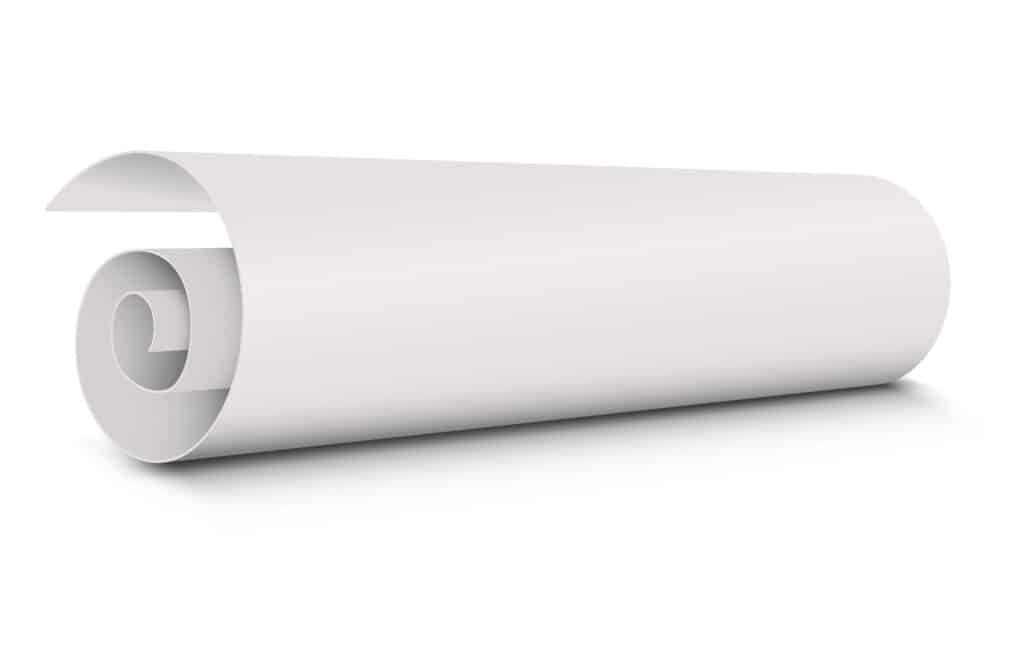
The synthetic nature of Teflon makes it more durable and resistant to high temperatures, while the natural composition of parchment paper makes it more environmentally friendly and biodegradable.
2. Heat Resistance
Teflon sheets can withstand temperatures up to 500°F (260°C), making them suitable for high-heat applications like heat pressing, oven use, and even some industrial processes.
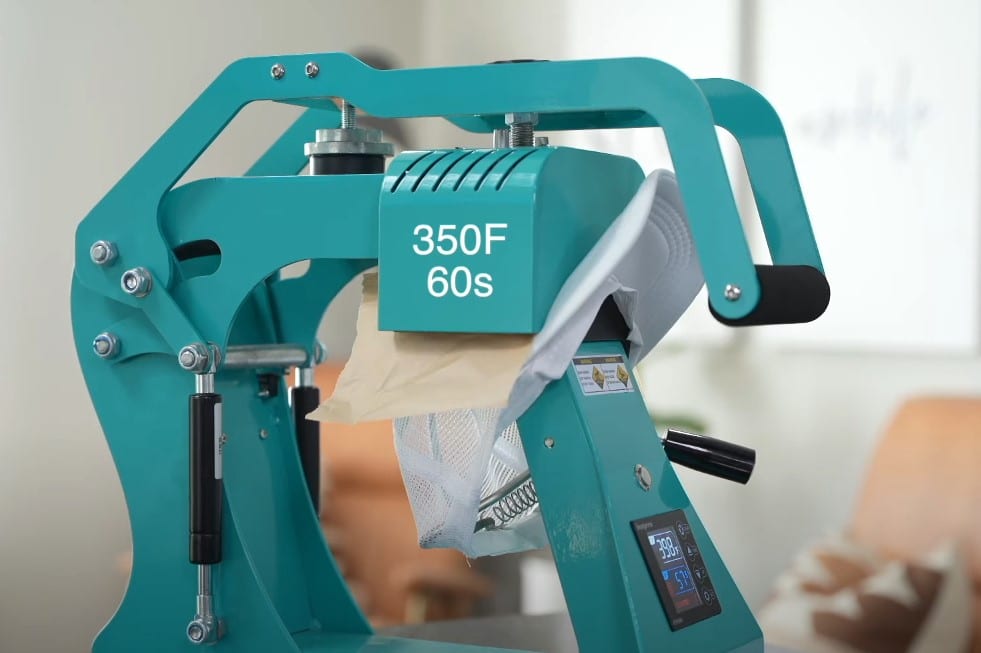
On the other hand, parchment paper has a lower heat resistance limit of around 420°F (216°C), which makes it suitable for most baking and cooking applications but not for extremely high temperatures.
3. Non-Stick Properties
Both Teflon sheets and parchment paper offer non-stick surfaces, but the degree of non-stickiness varies. Teflon sheets have an exceptionally smooth and non-stick surface due to their synthetic composition and low surface energy.
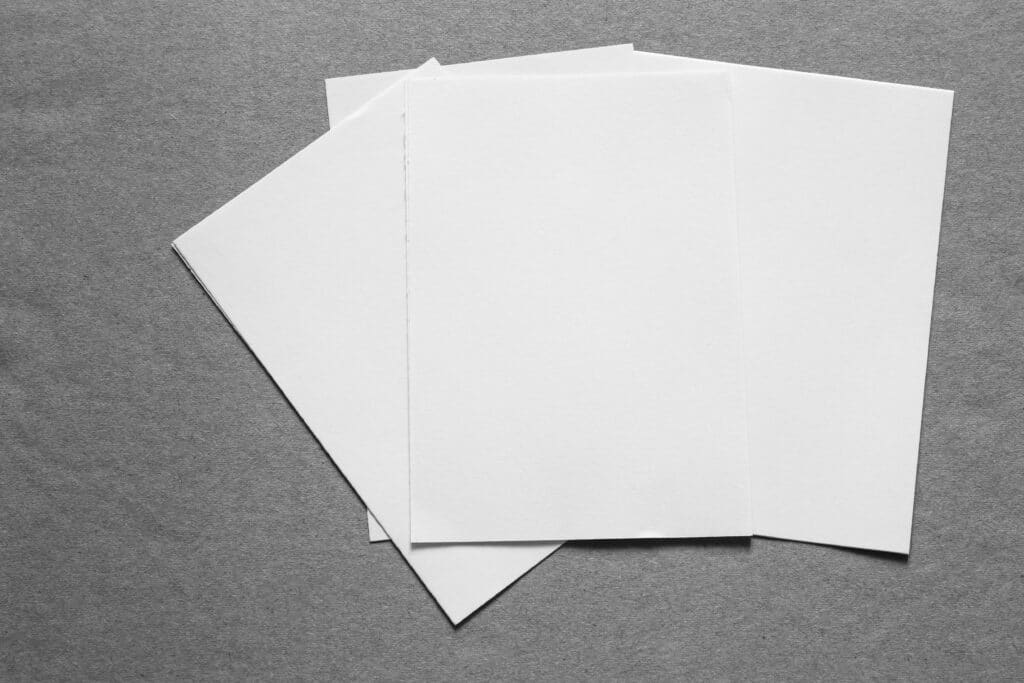
This allows foods and materials to be easily released from the surface, minimizing the risk of sticking or tearing. Parchment paper’s non-stick properties are good but may not be as effective as Teflon in some cases.
4. Reusability
Teflon sheets are designed to be reusable, allowing you to use them multiple times before needing to replace them. This is due to the inherent strength and stability of the PTFE material, which can withstand repeated use without degrading.
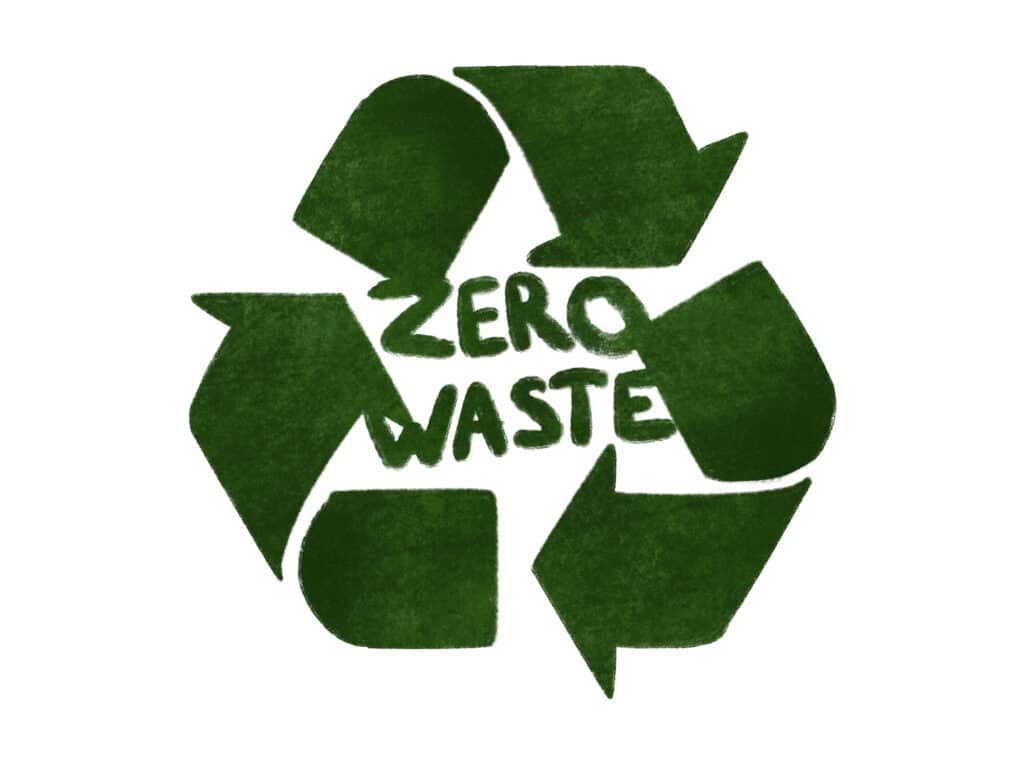
Parchment paper, on the other hand, is designed for single use and should be discarded after each use. While it is possible to reuse parchment paper in some cases, its effectiveness and non-stick properties may diminish after repeated use.
5. Chemical Resistance
Due to its synthetic composition, Teflon sheets are highly resistant to chemicals, ensuring that they won’t react with acidic or alkaline ingredients. The strong carbon-fluorine bonds in PTFE make it highly inert and resistant to most chemicals.

Parchment paper, while generally resistant to most foods, may not be as effective in resisting certain chemicals or highly acidic or alkaline ingredients. The cellulose fibers and coatings used in parchment paper can degrade.
6. Environmental Impact
While Teflon sheets are more durable and reusable, their synthetic composition may have a higher environmental impact compared to parchment paper, which is made from natural cellulose fibers.

On the other hand, parchment paper is made from renewable and biodegradable materials like wood pulp, making it a more environmentally friendly option.
7. Cost
Generally speaking, Teflon sheets are more expensive than parchment paper due to their durability, heat resistance, and non-stick properties.
The manufacturing process of Teflon sheets is more complex and involves specialized materials and techniques, which contributes to the higher cost.
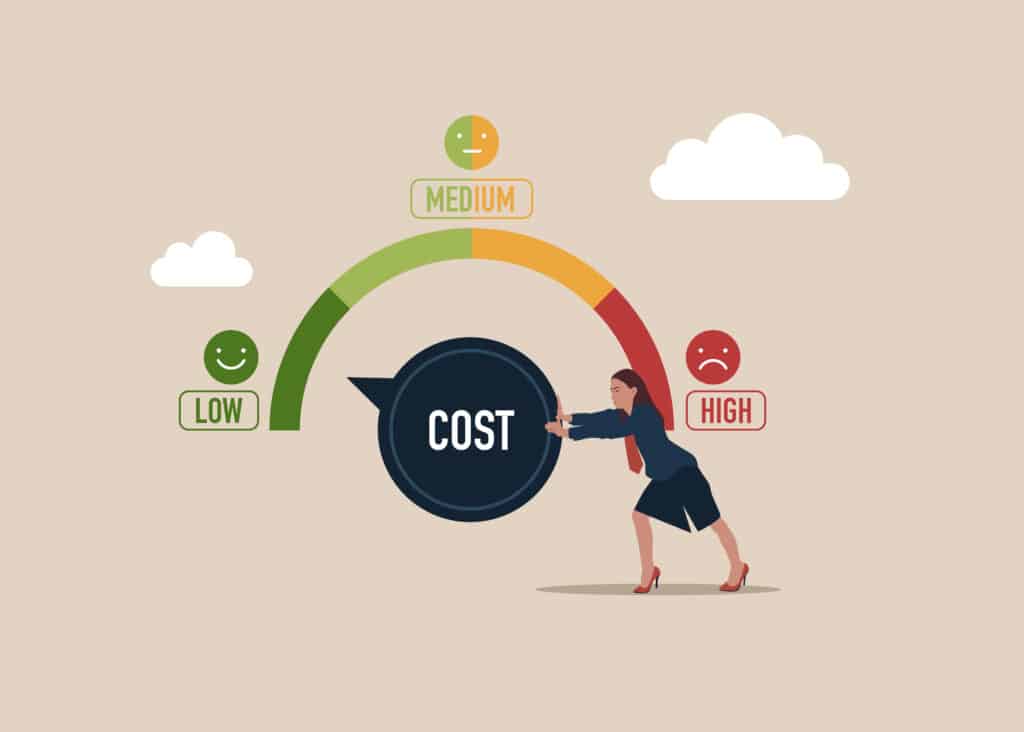
Additionally, the reusability of Teflon sheets means that fewer sheets are required over time, but the initial investment can be higher. Parchment paper, being disposable and made from natural materials, is typically less expensive.
It’s important to note that these differences are general guidelines, and specific product characteristics may vary among brands and manufacturers. Always refer to the manufacturer’s instructions and specifications for the most accurate information.
Frequently asked questions
Below are a few frequently asked questions to help you out:
Does parchment paper have 2 different sides?
Yes, parchment paper typically has two sides, one side is coated with silicone or other non-stick materials, while the other side is uncoated.
The coated side is intended for baking or cooking, while the uncoated side can be used for tasks like rolling out dough or covering surfaces.
What is the difference between parchment paper and transfer paper?
Parchment paper and transfer paper are different materials used for different purposes. Parchment paper is primarily used for baking and cooking, providing a non-stick surface and heat resistance.
Transfer paper, on the other hand, is used for transferring designs or images onto different surfaces, such as fabrics or ceramics, through heat transfer or sublimation processes.
What is better than parchment paper?
While parchment paper is a versatile and useful material, there are alternative options that may be better suited for specific applications like silicone baking mats, Teflon sheets, and unbleached wax paper.
Wrapping Up
Choosing between Teflon sheets and parchment paper ultimately depends on your specific needs and priorities.
If you require higher heat resistance, exceptional non-stick properties, and reusability, Teflon sheets may be the better choice, albeit at a higher cost.
Parchment paper, on the other hand, offers a more affordable and disposable option that is suitable for most baking and cooking applications within its temperature limitations.
Remember, both materials have their strengths and weaknesses, and it’s important to use them appropriately and follow safety guidelines.

